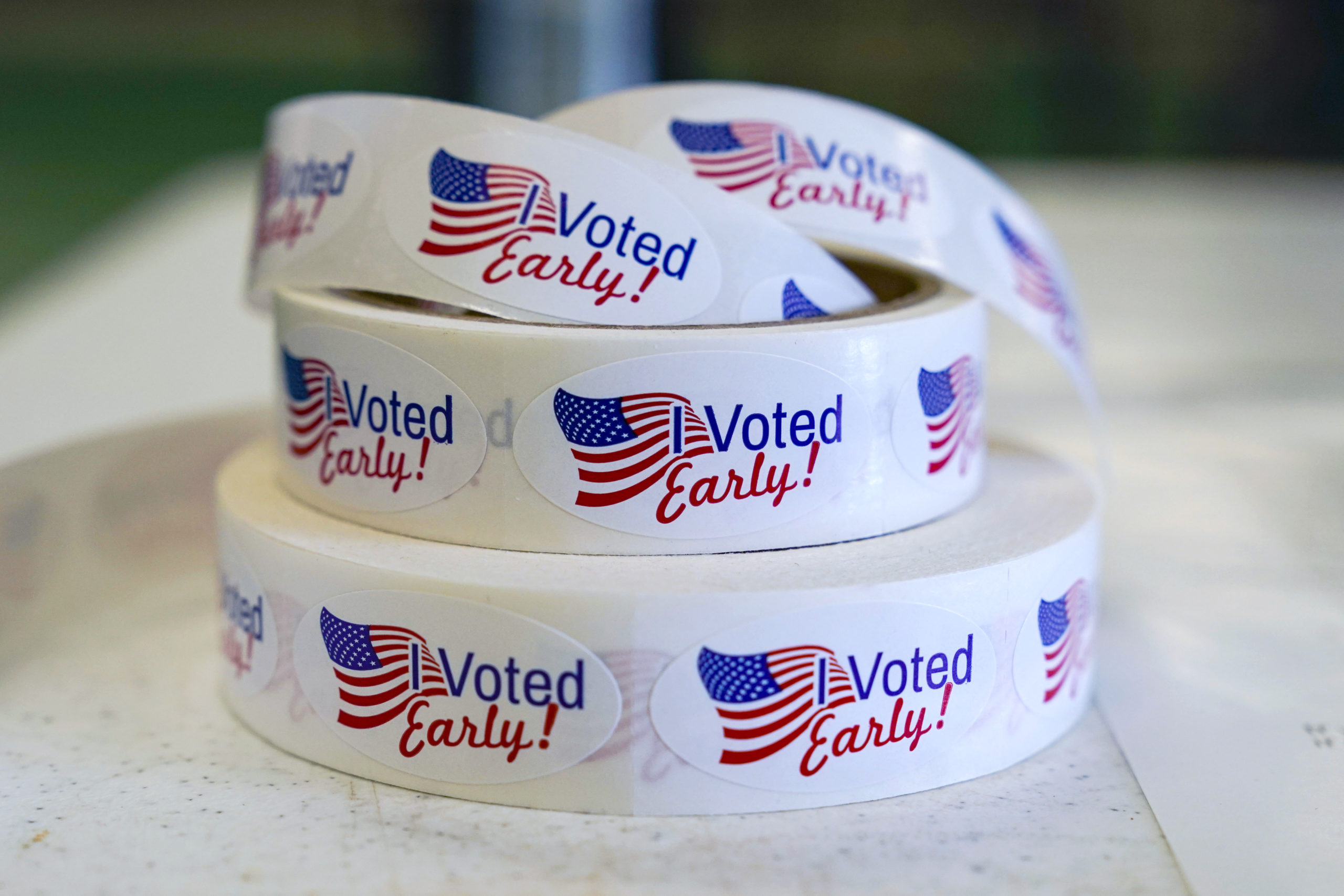Women of Intellectual Property
By: APRIL ROCKSTEAD BARKER//February 23, 2005//
 |
|
“A lot of the general counsels from a lot of the big companies are requiring their outside counsel to be diverse. And we can certainly provide a work force that does have the gender diversity." Billie Jean Smith, |
In a novel approach to marketing its intellectual property practice, Michael Best & Friedrich LLP is promoting some valuable assets: Women.
Twenty-three of the firm’s 58 intellectual property attorneys are women, and 15 of the firm’s 20 other intellectual property professionals are women.
"We think we have something pretty unique, and at least anecdotally, we don’t know of anyone else that has as large a group as we do," said Billie Jean Smith, a partner in the firm and the chair of its Intellectual Property Women’s Marketing Initiative.
The presence of women in the firm’s intellectual property group is not new, Smith said during a recent interview with the Wisconsin Law Journal.
"We’ve certainly had women here for quite some time," she said. "The public discussion in our marketing efforts to promote IP women as part of Michael Best & Friedrich has only been within about the last year, and we’re still really early in that promotional process."
The "Intellectual Property Women" subgroup featured on the firm’s Website is a specialty area within the firm’s intellectual property group, Smith said.
While others may try to copy the strategy, and some already advertise the women in their firms as a whole, Michael Best & Friedrich intends to pioneer a marketing approach specific to women in intellectual property practice, she said.
"We hope to be the first out there," Smith said. "We suspect that there may be others that come after us. But we think we’re the first."
Diversity Crucial to Clients
A strong representation of women in a practice is an advantage in a time when many large corporate clients will work only with firms that can provide evidence of diversity among their attorneys, Smith said.
"A lot of the general counsels from a lot of the big companies are requiring their outside counsel to be diverse," she said. "And we can certainly provide a work force that does have the gender diversity. So it opens up for us the clients that we’re able to attract."
For some clients, it is not enough to have women on the letterhead, Smith said; they also want to see evidence that women are participating in the work on the files.
Although in some cases women only want to hire lawyers who are women, that is not always the case, Smith said.
"Some do, and some have no preference," she said. "I have clients who came to me because they wanted to deal with a woman patent attorney. I have other clients [for whom] that wasn’t their primary motivation."
In many of the large biotechnology companies, many of the top executives are men, according to Karen S. Canady, an intellectual property attorney in California who also chairs the Women in IP Law Committee of the American Intellectual Property Law Association (AIPLA).
"But a lot of the patent attorneys that are on the client side of hiring outside patent counsel — those are women, in many cases," she said. "And I have seen that a lot of times there’s a dynamic that’s very positive, where they like working with women as their outside counsel. And so definitely a good strategy for a law firm is to have women for those clients to connect with."
In her personal observation, many men who have recently entered the profession are interested in family and work-life balance, Canady said, which reflects a general societal trend toward including values traditionally seen as feminine as part of a broader perspective that improves the profession as a whole.
"I think that it’s not just that women clients respond to women attorneys, but that they respond to this other mindset that’s emerging," she said.
Communication Emphasized
The Web site promotional materials for Michael, Best & Friedrich’s Intellectual Property Women specialty area highlight its professionals’ "unique abilities as communicators."
"It’s pretty well documented in a lot of the publications that women and men have different communication styles," Smith said. "And when you bring both to the table, one is not better than the other — they’re different. And some clients are comfortable with one style, some clients are comfortable with the other.
"That’s why we feel that by having a large group of intellectual property professionals that come in all sorts of shapes, sizes, men, women, we can bring different problem solving and different communication styles to clients and can better service our clients."
Communication with clients is a priority in general in the firm’s practice, Smith added.
"We believe not only our women lawyers but our male counterparts as well have a little different style," she said. "You hear the geeky engineer stereotype, and we definitely have broken that stereotype."
Recruiting women in intellectual property law becomes easier after a firm has a solid group of women in its practice, Smith said.
"It’s kind of a dou
ble hit, because you have to find women that go into sciences and like technology and then that go into large law firms," she said. "And that can be very difficult to do, but we found a way to do it and are a better group because of it."
Data Hard to Find
It appears that there are significantly more women in intellectual property law than there were just ten years ago, according to Canady, but a lack of recorded data makes it difficult to find comparative information about the number of women in firms’ practices.
"We often get asked if we know how many women practice and that kind of thing," she said, adding that AIPLA does distribute an annual economic survey that asks its members about issues such as billing rates and compensation.
"One of the questions they’ll ask is gender information about their associates and partners at firms, but I’ve looked through the results, and it’s often not reported," Canady said. "And I don’t know whether that implies that they have no females at those firms, or they just don’t want to say."
The dearth of information came as a surprise to the marketing team at Michael Best & Friedrich, as well, Smith said.
"We’re hoping we can trigger somebody to start keeping those statistics," she said.
Legal News
- History made in Trump New York trial opening statements
- Prosecutor won’t bring charges against Wisconsin lawmaker over fundraising scheme
- Republican Wisconsin Senate candidate says he doesn’t oppose elderly people voting
- Vice President Harris to reveal final rules mandating minimum standards for nursing home staffing
- Election workers fear threats to their safety as November nears
- Former law enforcement praise state’s response brief in Steven Avery case
- Eric Toney announces re-election bid for Fond du Lac County District Attorney
- Former Wisconsin Democratic Rep. Peter Barca announces new bid for Congress
- Republicans file lawsuit challenging Evers’s partial vetoes to literacy bill
- More human remains believed those of missing woman wash up on Milwaukee Co. beach
- Vice President Harris returning to Wisconsin for third visit this year
- Wisconsin joins Feds, dozens of states to hold airlines accountable for bad behavior
WLJ People
- Power 30 Personal Injury Attorneys – Russell Nicolet
- Power 30 Personal Injury Attorneys – Benjamin Nicolet
- Power 30 Personal Injury Attorneys – Dustin T. Woehl
- Power 30 Personal Injury Attorneys – Katherine Metzger
- Power 30 Personal Injury Attorneys – Joseph Ryan
- Power 30 Personal Injury Attorneys – James M. Ryan
- Power 30 Personal Injury Attorneys – Dana Wachs
- Power 30 Personal Injury Attorneys – Mark L. Thomsen
- Power 30 Personal Injury Attorneys – Matthew Lein
- Power 30 Personal Injury Attorneys – Jeffrey A. Pitman
- Power 30 Personal Injury Attorneys – William Pemberton
- Power 30 Personal Injury Attorneys – Howard S. Sicula











